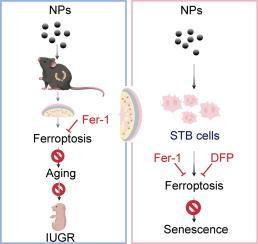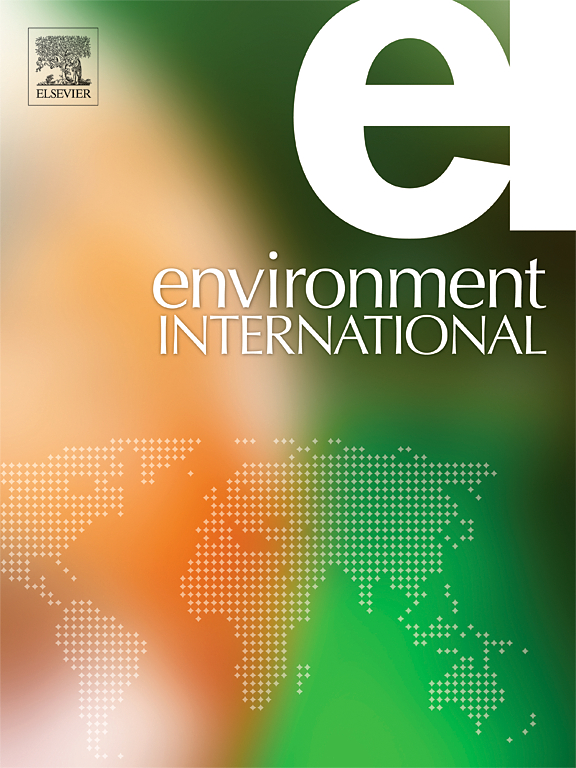Gestational exposure to nanoplastics disrupts fetal development by promoting the placental aging via ferroptosis of syncytiotrophoblast
IF 10.3
1区 环境科学与生态学
Q1 ENVIRONMENTAL SCIENCES
引用次数: 0
Abstract
Micro(nano)plastics (MNPs), are emerging environmental pollutants that have garnered widespread attention. Epidemiological and animal studies have shown that MNPs exposure during pregnancy is associated with adverse pregnancy outcomes, such as intrauterine growth restriction (IUGR) and miscarriage. However, the underlying mechanisms remain poorly understood. In this study, we found that exposure to a high dose (1 μg·mL−1) of 100 nm polystyrene nanoparticles (NPs) from gestational day (GD) 0 to GD17 significantly decreased fetal weight and increased the number of resorptions compared to the control group. Moreover, fetal weight was significantly lower in the high-dose group than in the low-dose (0.1 μg·mL−1) group. Meanwhile, ferroptosis and senescence were observed in placentas from mice exposed to high dose of NPs. In vitro experiments using human syncytiotrophoblast (STB) cells differentiated from BeWo cells, we found that NPs caused ferroptosis and senescence in STB cells. Subsequent investigations revealed that the inhibition of the ferroptosis signaling by ferrostain-1 (Fer-1) or deferiprone (DFP) ameliorated senescence induced by NPs in human STB cells. Furthermore, alleviating placental senescence using Fer-1 significantly improves fetal weight loss caused by NPs exposure during pregnancy in mice. Taken together, our results demonstrated that NPs exposure during pregnancy activated the ferroptosis pathway in placental STB, resulting in senescence of STB, which may attribute to the NPs-induced IUGR. This study not only elucidated the mechanistic link between NPs exposure and adverse pregnancy outcomes but also highlighted the necessity for targeted interventions to protect fetal health, underscoring the broader implications for environmental and public health policy.


求助全文
约1分钟内获得全文
求助全文
来源期刊

Environment International
环境科学-环境科学
CiteScore
21.90
自引率
3.40%
发文量
734
审稿时长
2.8 months
期刊介绍:
Environmental Health publishes manuscripts focusing on critical aspects of environmental and occupational medicine, including studies in toxicology and epidemiology, to illuminate the human health implications of exposure to environmental hazards. The journal adopts an open-access model and practices open peer review.
It caters to scientists and practitioners across all environmental science domains, directly or indirectly impacting human health and well-being. With a commitment to enhancing the prevention of environmentally-related health risks, Environmental Health serves as a public health journal for the community and scientists engaged in matters of public health significance concerning the environment.
 求助内容:
求助内容: 应助结果提醒方式:
应助结果提醒方式:


